Pistol Manual Safety: Will One Save or Cost You Your Life?
 Bryan Hill / October 01 2024
Bryan Hill / October 01 2024
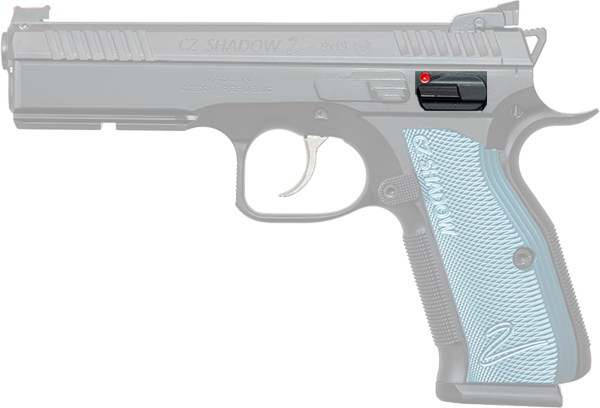
A manual safety stops the pistol from firing while it's engaged. It must be manually disengaged by the user.
We'll cover why pistol safeties are important, the types of manual safety, and which ones are best at saving your
life or the lives of others.
On This Page:
- Why Are Pistol Safeties Important?
- What Makes a Good Safety?
- Trigger Safety
- Grip Safety
- Thumb Safety
- Which Safeties Are Best?
Why Are Pistol Safeties Important?
Safeties prevent a gun from firing when it shouldn't, while not preventing it from firing when it should.
It's a tough balance; the more safeties a gun has, the more likely it will jam.
What Makes a Good Safety?
-
Easy to reach. If you must change your grip to use a safety, pick a different pistol.
-
Clicks on and off. You feel a click when the safety goes on and when it goes off. That way you know 100% what state it's in.
-
Right size. It's large enough to find and use quickly. It's small enough to not get caught on things or moved accidentally during carry.
-
Doesn't cause jams. Some safeties raise the risk of jams, especially in muddy, wet, or sandy places. This is usually the case with grip safeties, and sometimes with trigger safeties.
Trigger Safety
This is something built into the trigger that stops the gun from firing until it's pressed.
Otherwise, the gun could be dropped, thrown, etc., and it won't fire.
Trigger Blade
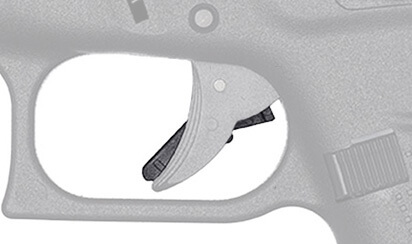
This is a thin piece in the middle of the trigger.
If you tried pressing the trigger without pressing the blade, the trigger won't go back all the way.
It gets blocked by the blade under the trigger and the back of the trigger guard.
This is an overall great design.
Trigger Hinge
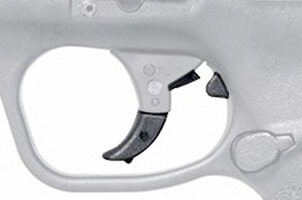
If you tried pressing the trigger without pressing the bottom hinge, the trigger won't go back all the way.
It gets blocked by the blade under the trigger, and the nub at the back of the trigger guard.
This has a major downside: if your finger is small enough, you may press the upper half of the trigger without pressing the hinge.
Firing Pin/Striker Block
This is a part inside the
slidethat blocks the firing pin or striker from firing
ammunition until the trigger is pressed.
It can be combined with a blade or hinge safety. It's a great way to prevent the pistol from firing when dropped.
Most firing pin block designs worsen the trigger pull, but recent designs don't.
Grip Safety
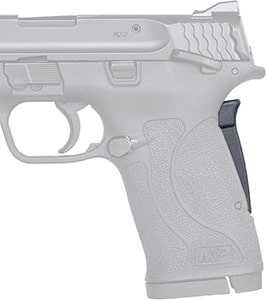
This is a lever on the back of the
grip that stops the gun from firing until it's pressed in all the way.
This is great, because gripping the pistol also makes it ready to fire. It's a manual safety, but you don't have to think about using it.
There are two downsides:
It makes pistols less reliable in muddy, wet, or sandy places. Why? The grip safety isn't water-tight.
It can let stuff inside the gun and jam everything up.
It can also stop you from firing if you can't get a good grip on the pistol.
Say your hands are hurt, you're sick, etc.
If you're older, handicapped, or similar, try a grip safety before you buy.
Thumb Safety
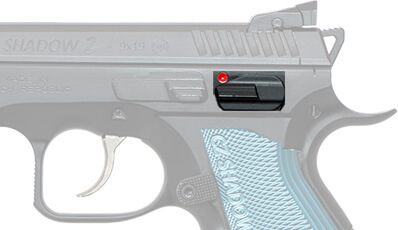
This is the only safety that you have to consciously use: You flip it up or down with your dominant thumb.
These can be on the
slideor
frame.
A frame-mounted safety is better. Why? It's easier to reach. It's less likely to get caught on things. If it gets caught on anything, it won't cause jams as often.
Modern pistols are safe enough to not need thumb safeties, but they still have uses:
-
Your pistol's trigger is modified to be under 3 lb.
-
You carry in the appendix position (11-1 o'clock).
-
The pistol has no other safeties.
-
You work close-quarters with criminals.
If an assailant gets your pistol and the thumb safety is engaged, they usually won't expect it.
They may not even know where the safety is or how it works. That buys you a few seconds to react.
In the video above, the officer was saved by his Beretta 92's manual safety.
The perp got his gun, but couldn't figure out how to get the thumb safety disengaged before help arrived.
Even then,
you must train and practice with your pistol so that disengaging the safety is automatic.
Otherwise, you might forget the safety is on and give assailants a few seconds to act. In a gunfight, that's fatal.
Thumb safeties are for serious shooters, not casuals.
Which Safeties Are Best?
Trigger safeties, especially a trigger blade and firing pin/striker block make your pistol safer without causing jams.
A thumb safety is good in the above special cases. Otherwise, it may cost you in a gunfight.
Related Articles
Feedback
Are you happy with this page?